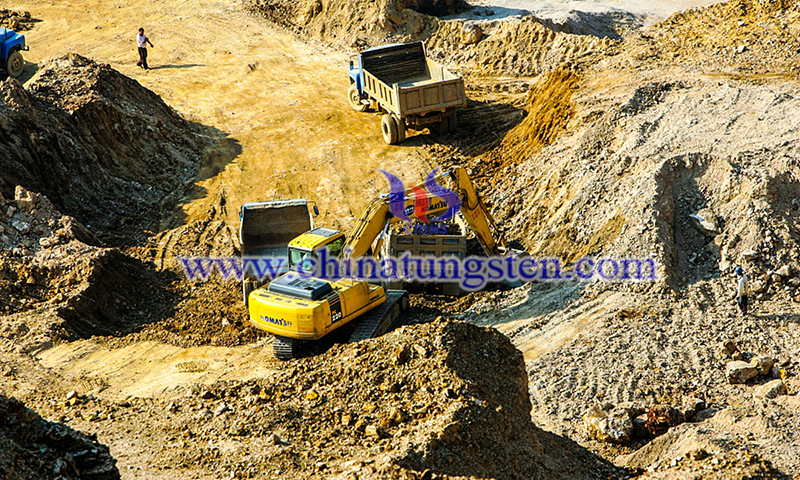China, Myanmar Resume Rare Earths Trade After Border Reopening
- Details
- Category: Tungsten's News
- Published on Monday, 13 December 2021 22:45
According to the Global Times, rare earth exports from Myanmar to China resumed after the reopening of the China-Myanmar border crossing at the end of November, which analysts say may ease the price of rare earths, although in the long run the price may rise due to Chinese focus on carbon emissions reduction.
A company official at a state-owned rare earth company in Ganzhou City, Jiangxi Province, told the Global Times that rare earth minerals from the country were held up at the border crossing for several months and customs clearance resumed in late November.
Trucks carrying rare earth minerals are entering Ganzhou every day, while it is estimated that about 3,000-4,000 tons of rare earth minerals are piling up at the border crossings. The two Sino-Myanmar border crossings, which were closed for more than six months due to coronavirus restrictions, reopened for trade in late November, thehindu.com reported.
The two border crossings are Kyin San Kyawt border crossing and Chinshwehaw border crossing, which are located at a distance from the northern city. Experts say the timely resumption of rare earth trade may reflect the desire of related industries in both countries to resume business, as China is dependent on the country for rare earth supplies.

About half of Chinese heavy rare earths, such as dysprosium and terbium, come from Myanmar. Rare earth mines in the country are similar to those in Ganzhou. This is where China is trying to restructure its rare earth industry from mass dumping to refining, as the country has developed many technologies over the years.
Experts say the resumption of rare earth trade should lead to lower prices, at least for a few months, after the price increase since the beginning of the year. The magnitude of the decline is hard to predict, but it could be within 10-20%.
Prices of praseodymium alloys soared about 20 percent in November, while neodymium oxide prices rose 16 percent, according to data on Chinese commodity information portal 100ppi.com. However, analysts say that prices could move higher again in a few months, as the underlying uptrend is not yet over.
A Ganzhou industry source told the Global Times on Thursday that the rapid growth in upstream supply could lead to a short-term price drop, but the long-term trend is up due to labor shortages in the industry. “The estimated export volume is basically the same as before," he said. “But if foreign buyers buy a lot of rare earths, Chinese exporters may not be able to catch up with demand."
With the government's focus on green development, demand for rare earth minerals and products is surging in China, which is a major reason for the price increase. Rare earth elements are widely used in products such as batteries and electric motors to improve the performance of the products. In addition, the industry as a whole is realizing the recovery of the value of rare earths after the government raised the requirements to protect rare earth resources and stop low price dumping.
As Myanmar resumes exports to China, Chinese rare earth processing and exports will increase accordingly, but the impact on the market will be limited as the world rare earth supply structure has not yet changed significantly.
- Rare Earth Manufacturer & Supplier, Chinatungsten Online: www.chinatungsten.com
- Tungsten News & Prices of China Tungsten Industry Association: www.ctia.com.cn
- Molybdenum News & Price: news.molybdenum.com.cn
- Tel.: 86 592 5129696; Fax: 86 592 5129797; Email: sales@chinatungsten.com



 sales@chinatungsten.com
sales@chinatungsten.com